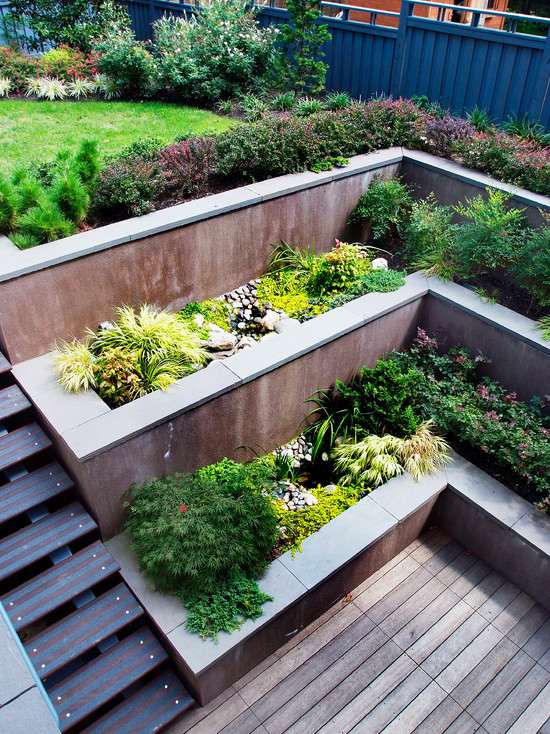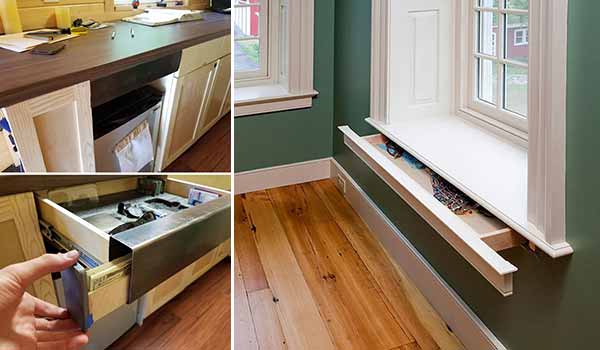38 Practical Retaining Wall Ideas and Designs Using Affordable Materials
DIY retaining walls can be a great addition to your yard or garden, as they have the potential to transform the look and feel of your outdoor space. If your property sits on a hill or slope, a garden or yard retaining wall may be a necessary feature.
In addition to providing aesthetic appeal, retaining walls have several functional benefits. They help retain soil and create more usable, level land out of sloped areas. Below are some low-budget DIY retaining wall ideas, which may be suitable for your outdoor space. With these ideas, you can create a retaining wall that fits your budget and complements the overall design of your yard or garden.
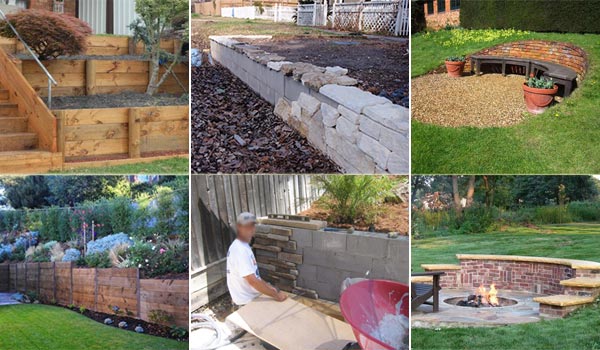
30+ Cheap & Practical DIY Retaining Wall Ideas Using Affordable Materials:
1. How To Build a Stylish Gabion Retaining Wall
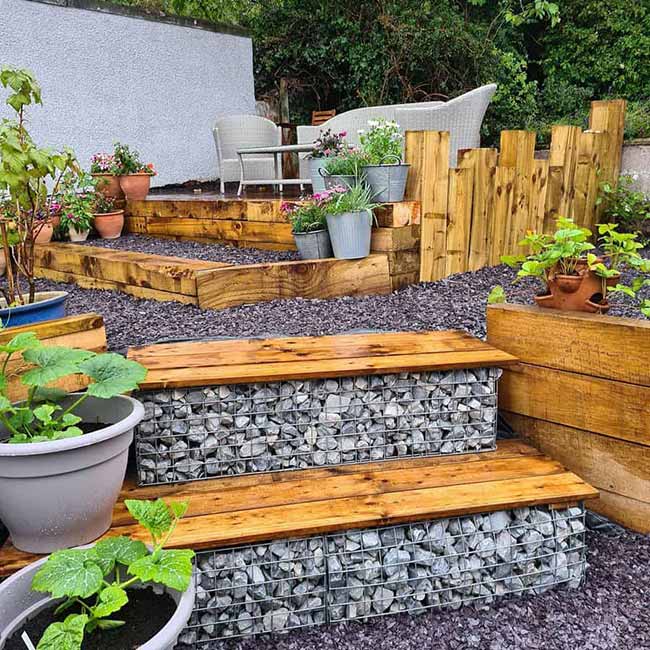
If you’re up for a DIY project, making your own gabion wall can save you money. A gabion wall consists of wireframes shaped into squares or rectangles, filled with tightly packed stones or rocks. This solid structure makes it ideal for retaining walls, as it effectively holds back earth.
When you make your own, you can decide the length and height of the wall, and choose the stone type. Popular options include sandstone, granite, and quartzite, but the choice is yours. Gabion walls can be a perfect option for easy retaining wall ideas on a budget.

DIY Gabion Retaining Wall
Build A Gabion Wall By Filling With Stones, Bricks, Or Other Materials.
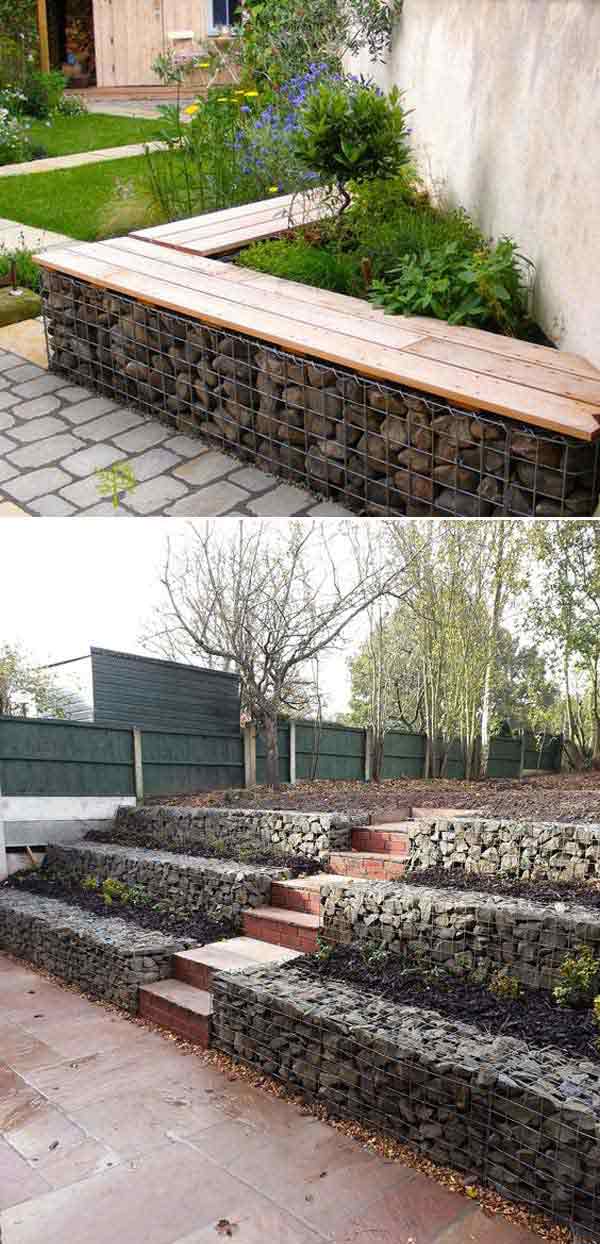
Ever thought about using gabion walls? Imagine these robust wire cages, filled with rocks, bricks, or similar materials that don’t grow.
Once packed, these gabion baskets become impressively weighty. Now, here’s where it gets interesting: you can stack them together to construct a retaining wall.
What’s the purpose? Well, it keeps your landscaping stable and acts as a guardian against soil erosion.
2. Install a Sleek and Durable Metal Wall/Steel Retaining Wall:
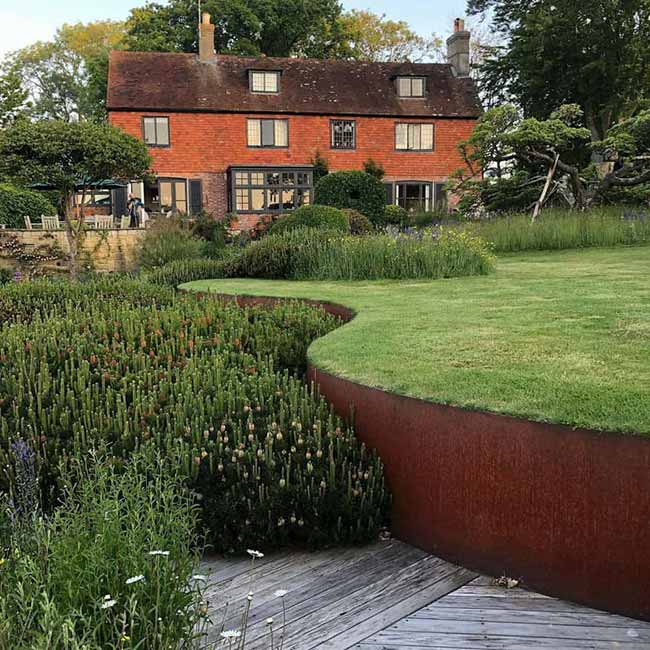
A metal retaining wall might not be the first idea that comes to mind, but it can offer a sleek, modern touch to your yard. While metal can be pricier per square foot than poured concrete, it’s an affordable choice compared to other options, like railroad ties.
Combining metal with other materials can soften its look. For example, frame the metal panels with wood timbers to avoid a harsh, industrial feel. Just make sure to use high-quality metal to avoid rusting over time.
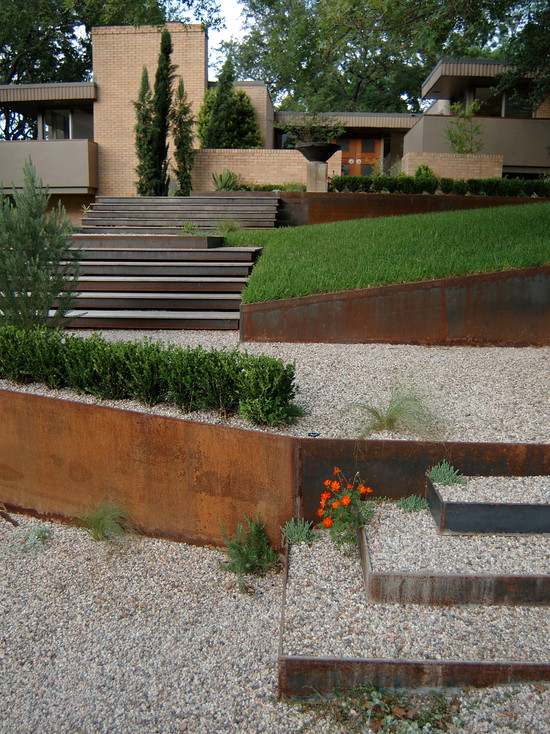
When it comes to upgrading your modern front yard landscape, think about adding multiple layers with steel retaining walls.
Why steel? Well, not only does it bring a sleek and contemporary look, but it’s also a practical choice that often eliminates the need for extensive foundation work.
This makes it a much easier installation compared to heavy concrete or wood walls, and it can truly enhance the overall appeal of your outdoor space.
3. Create Beautiful Garden Beds with Tiered Retaining Walls
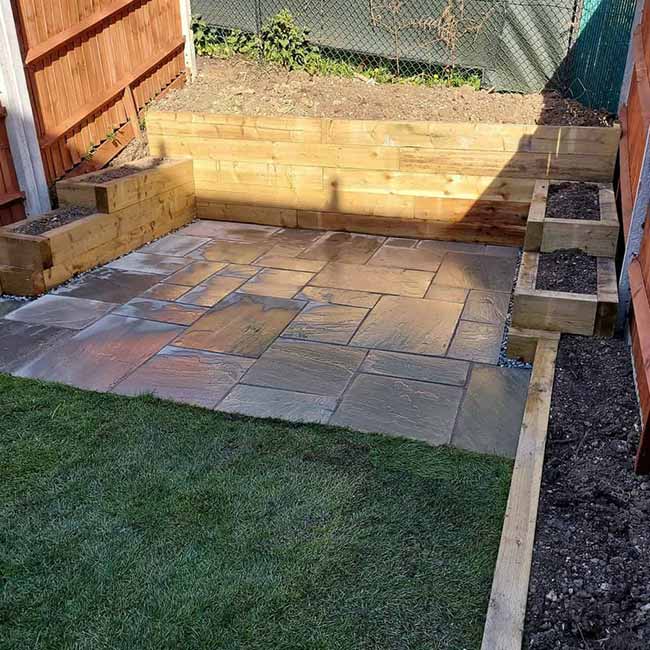
You don’t need a sloped yard to benefit from a retaining wall. By building a tiered wall, you can create different levels, each perfect for cultivating a garden bed.
This type of retaining wall allows you to grow a variety of plants, flowers, vegetables, or even greenery, depending on your soil needs. You can keep the garden walls simple or add unique decorations to match your garden’s theme. Whether you’re aiming for a whimsical garden or an English countryside look, this idea can bring your space to life.
4. Construct Your Retaining Wall With Concrete Blocks And Add A Stone Facade To Varying Heights For An Interesting Garden Feature.
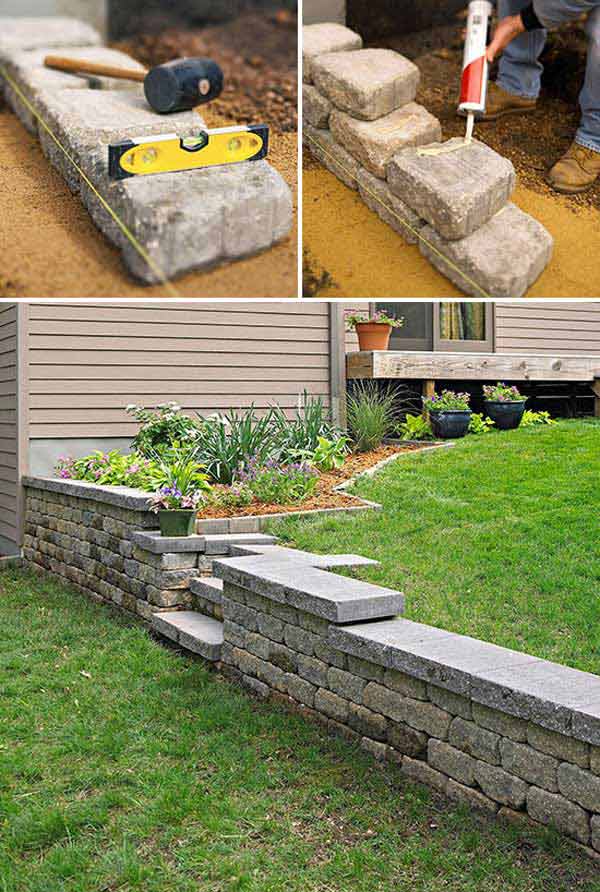
Let’s talk about pavers for a retaining wall – they’re a fantastic choice. You know why?
They come in a bunch of colors, and you can easily find them at your local home supply stores.
It’s a practical and colorful option to consider for your project.
Above Project Tutorial ====> bhg.com
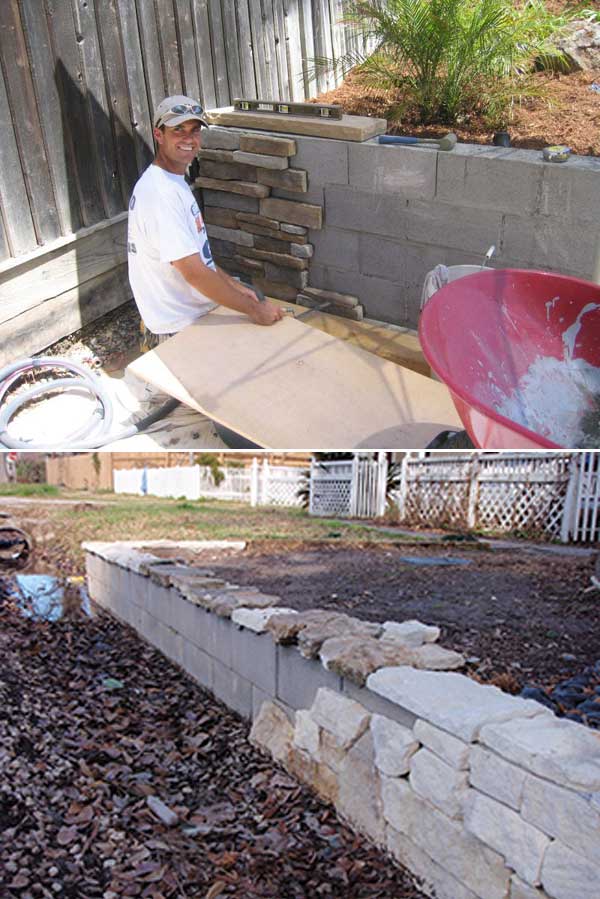
Exploring solutions for a sloped yard? Discover how to create a concrete block retaining wall to address the slope issue.
This project – ‘How to Build a Retaining Wall on a Slope’, will not only provide added space and structure to your yard but also increase its overall value.
Above Project Tutorial ====> nelsonwatergardens.com
Stone Block Walls for Durability and Customization
If you’re planning to build your own retaining wall, consider using wall blocks. These are clay or concrete blocks that you stack and reinforce for a solid structure. You can create a custom wall without breaking the bank. To save on costs, use cinder blocks for the main construction, and cover them with a paver base for a sleek finish. The result will be a durable, beautiful wall that you built yourself.

If pavers are out of your budget, another option is to paint the concrete blocks to hide their appearance. Concrete stain is another great option, offering more durability and versatility than paint.
5. Rustic Timber Walls for a Natural Charm
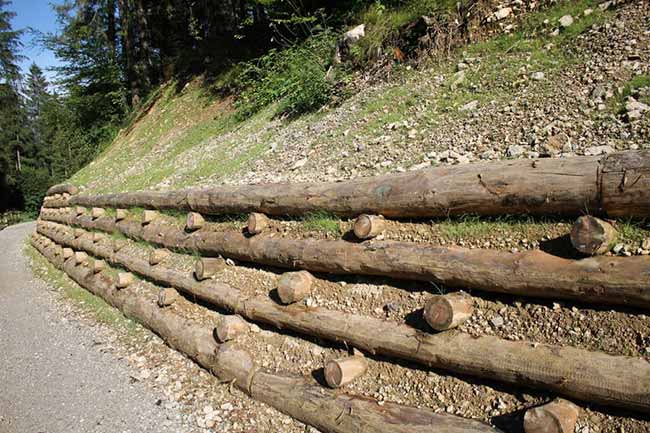
A timber retaining wall gives your property a natural, rustic charm. The finish of the logs determines how rustic your wall will look. Logs with their bark still intact will give a more rugged, earthy look, while smooth, finished logs resemble an elegant country lodge.
Add Rustic Charm with a Log Retaining Wall
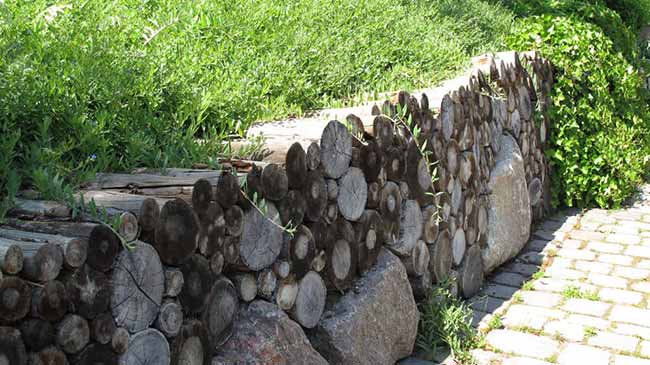
Log walls are best for smaller projects. If you plan on building a larger wall, metal reinforcements may be necessary for additional support. Choose the right diameter of logs to ensure the wall is strong enough for the load it needs to bear.
6. Utilize Stacked Rocks For An Organic And Beautiful Way To Make Use Of Your Sloped Space.
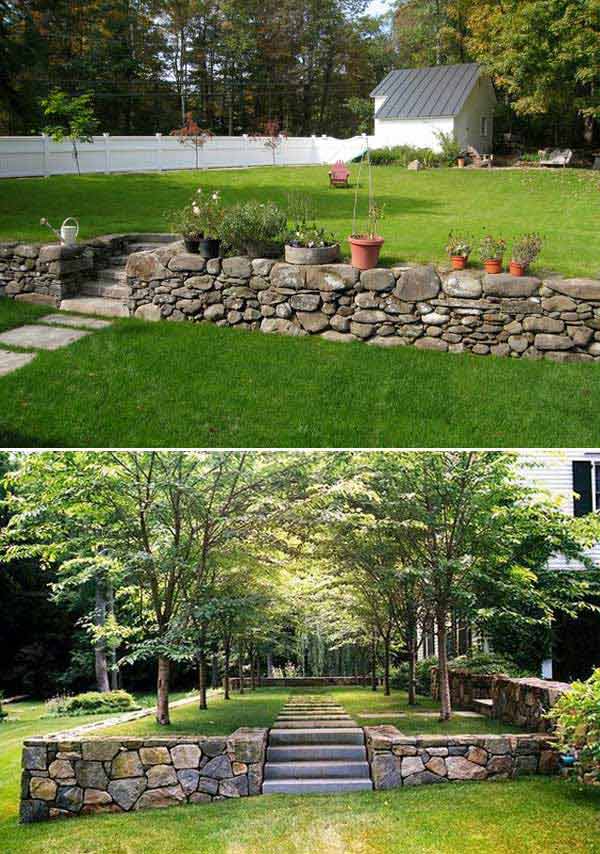
Mixing and matching stones of various sizes can work wonders, transforming an ordinary, low retaining wall into a breathtaking design feature.
It doesn’t just look incredibly organic; it also functions as an attractive barrier, shielding your yard from erosion, just like the example you see above.
It’s like bringing a touch of nature’s beauty right into your outdoor space while ensuring it stays safe and secure.
Above picture source: houzz.com Bottom picture source: thomortiz.tumblr.com
7. Use Pressure-Treated 2x4s, Plywood, And Trim Boards For An Easy And Fast Construction Process.
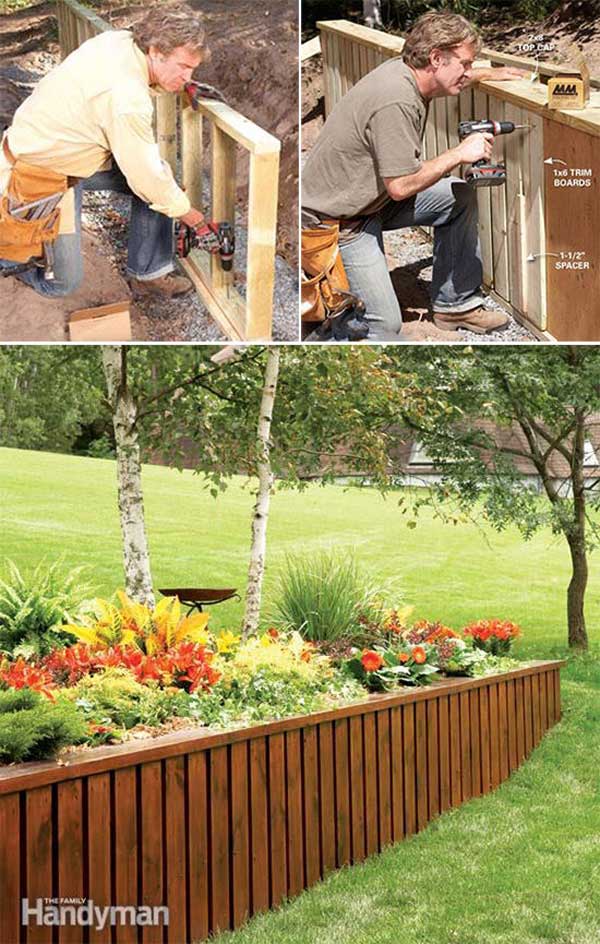
When you’re looking to enhance your garden with a retaining wall, but you want to break away from the usual stone and concrete options, here’s a fresh idea.
How about crafting a rustic yet impressively polished wall using pressure-treated plywood, 2x4s, and timbers?
Building this DIY retaining wall is a breeze, and it won’t eat up much of your time.
Just follow this plan and gather your materials, including wood boards, concrete, a bucket, screws, bolts, wood clamps, and safety gloves. It’s a fantastic project that can breathe new life into your garden.
Get Full Tutorial here ====> familyhandyman.com
8. Concrete Sleepers for a Retaining Wall
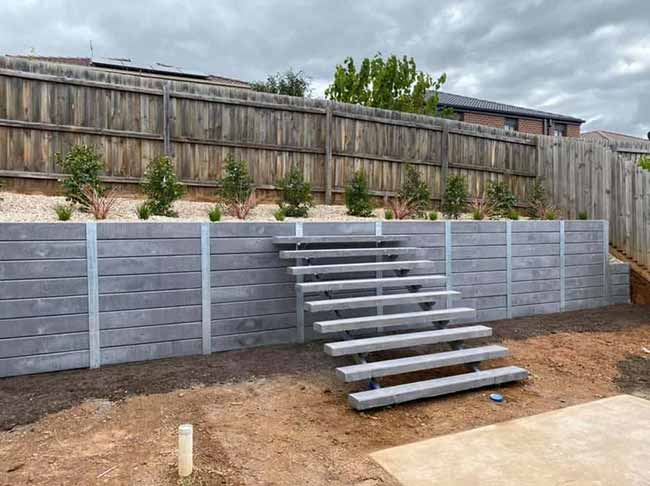
Concrete sleepers provide another option if you don’t want to use concrete blocks or poured concrete. These large pre-cast sections are placed together to form a sturdy wall. Unlike blocks, sleepers are larger and usually have a longer shape.
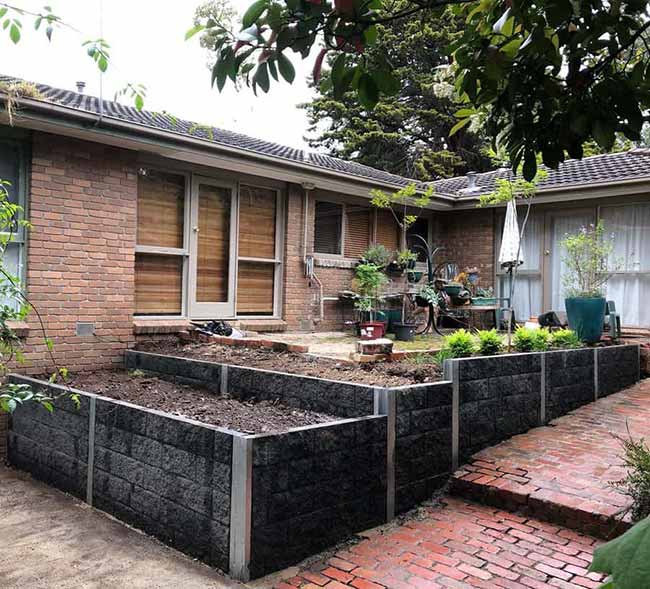
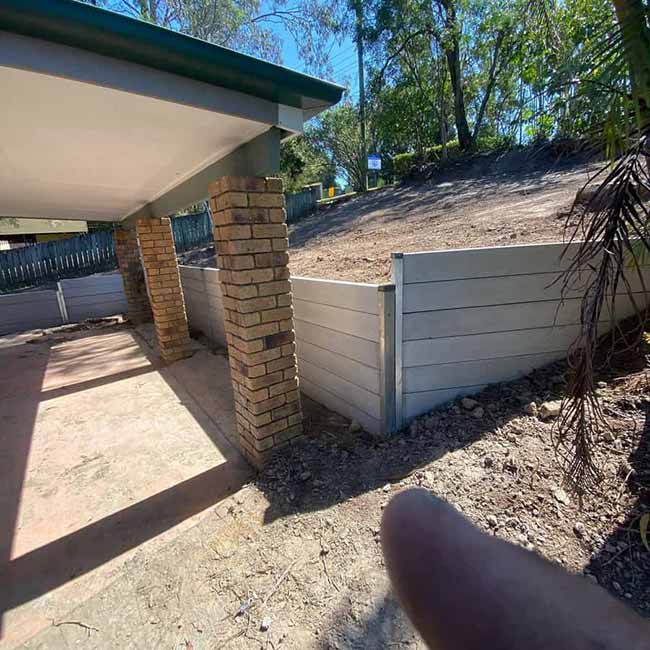
They are made in a controlled environment, which makes them stronger and more durable. Metal support frames are often required to hold them in place. They’re similar to fence posts, with consistent spacing for a smooth, stable wall. These sleepers are an inexpensive retaining wall idea that’s both practical and attractive.
9. Create A Unique, Cozy Outdoor Seating Area With A Curved Brick/Stone Retaining Wall.
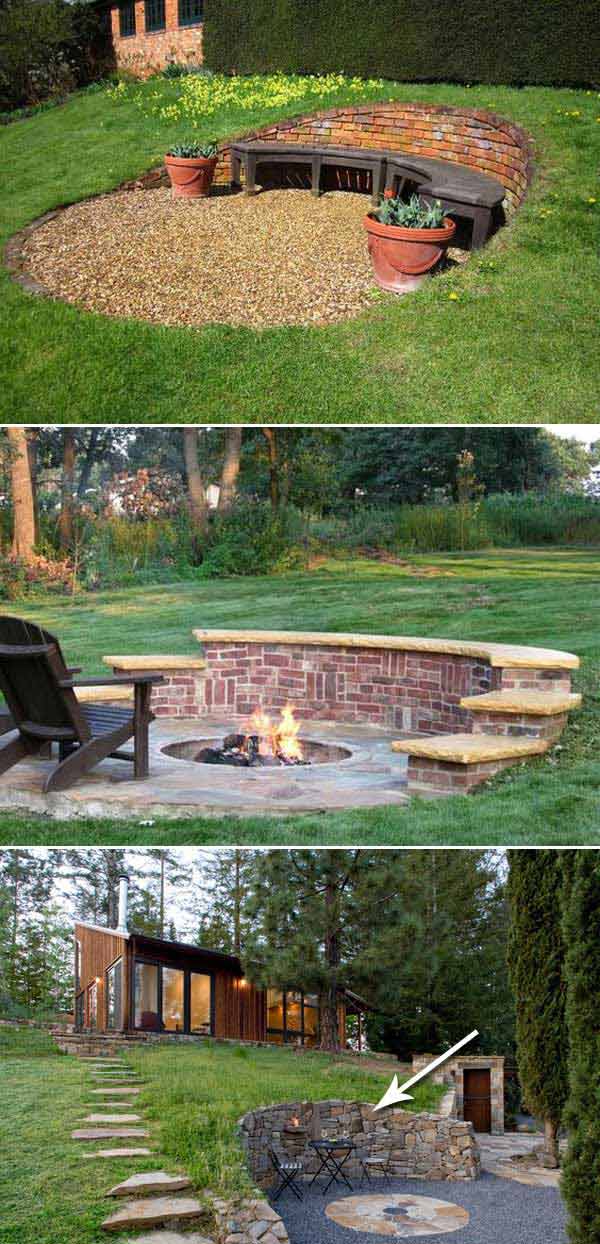
How about this for a straightforward DIY option in your front yard? Bricks!
They’ve stood the test of time and are a classic choice. Bricks have been used for homes, patios, even fire pit barriers, and plenty more.
So, why not consider them for your retaining walls? They’re not just timeless; they’re also incredibly DIY-friendly, making them a perfect choice for any sloped property.
Bottom Image Source: houzz.com
10. Create Your Own Boulder Retaining Wall – Bring Rustic Elegance with Rocks and Boulders:
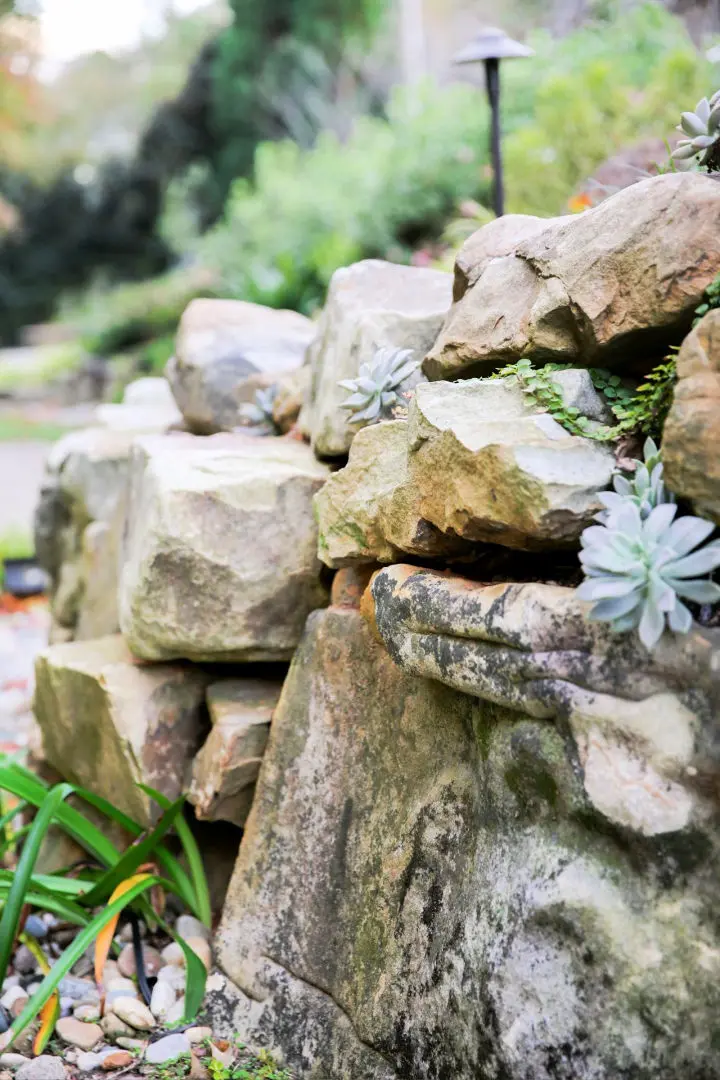
Thinking about adding a lovely touch to your garden with some beautiful flowers?
Before you rush to buy a trellis, consider this: how about crafting your very own boulder retaining wall?
It’s a DIY project that can not only spruce up your outdoor space but also make your flowers shine even brighter.
And guess what? You won’t need much – just gather up some drystones, concrete, thread, a level, and a few more essentials. It’s a simple yet rewarding endeavor that can transform your garden’s look.
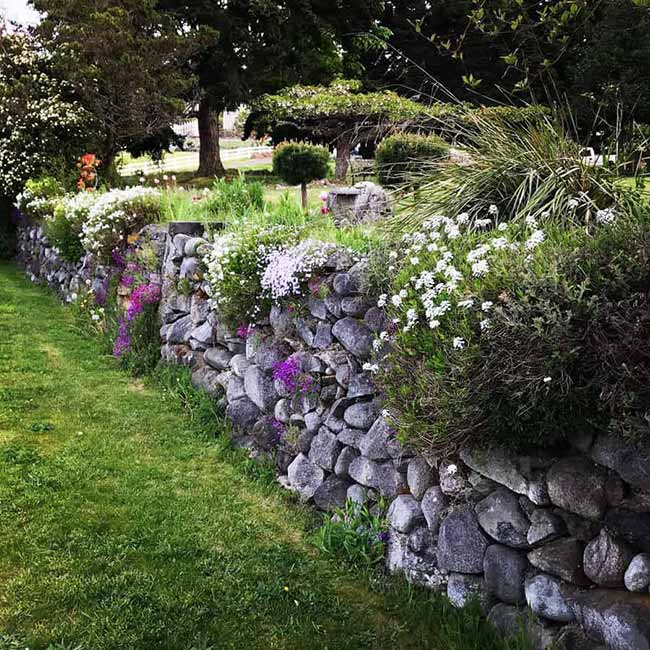
For a truly natural look, consider using large rocks and boulders in your retaining wall. Unlike stacked stone, which can look too uniform, natural stone walls create a more authentic, earthy appearance.
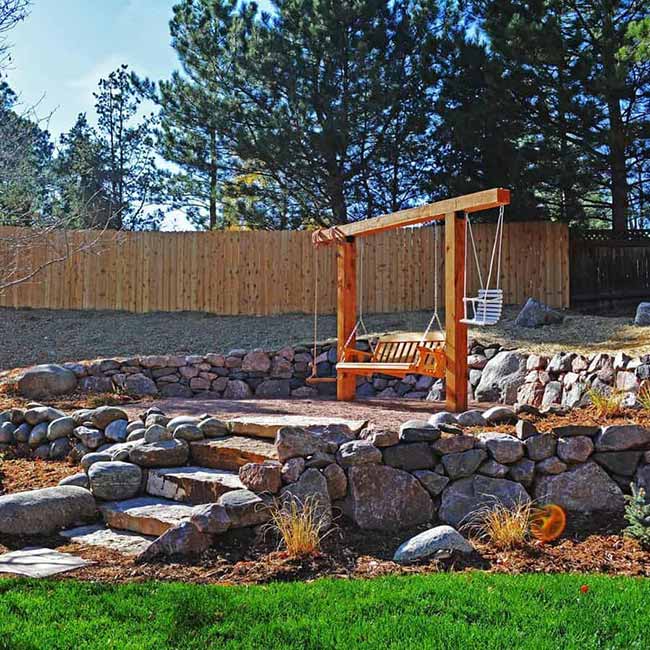
These walls blend seamlessly with their environment, offering a rustic and elegant finish. Keep in mind, though, that this project may require heavy equipment to move and place the oversized stones.
Incorporate Boulders, Pebbles, And Plants Into Your Retaining Wall Design For A Beautiful And Natural Look.
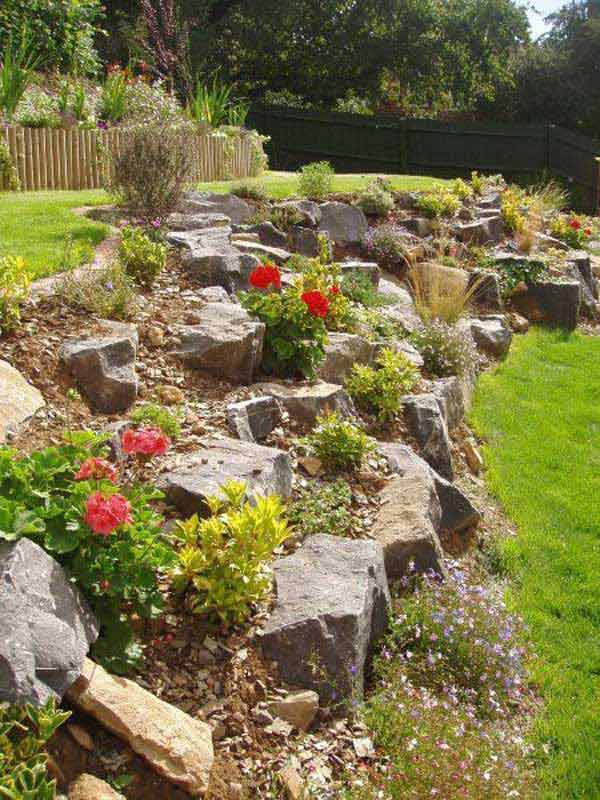
11. Recycle Old Tires In A Green Way By Incorporating Them Into Your Retaining Wall Design.
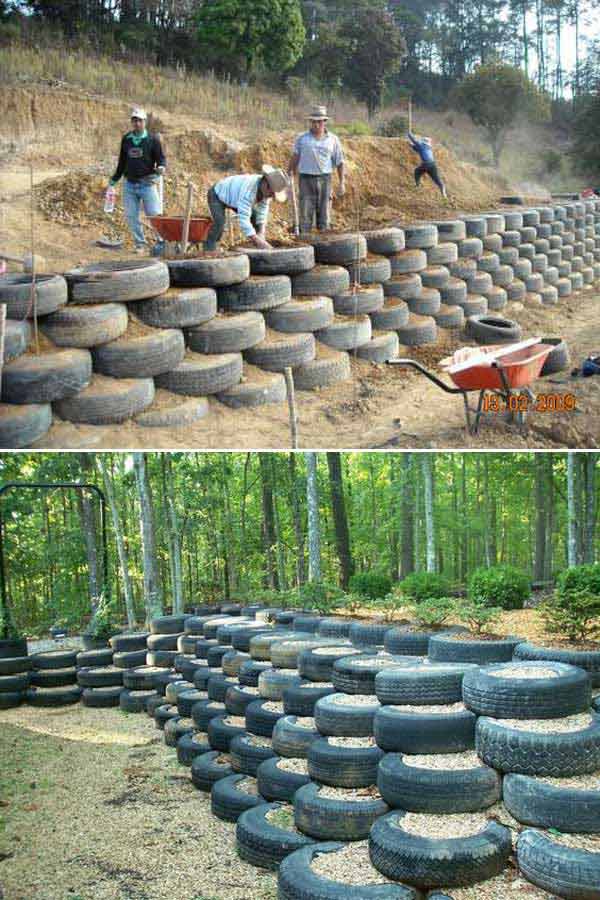
Source: globalgiving.org
12. Build a Retaining Wall with Sleepers
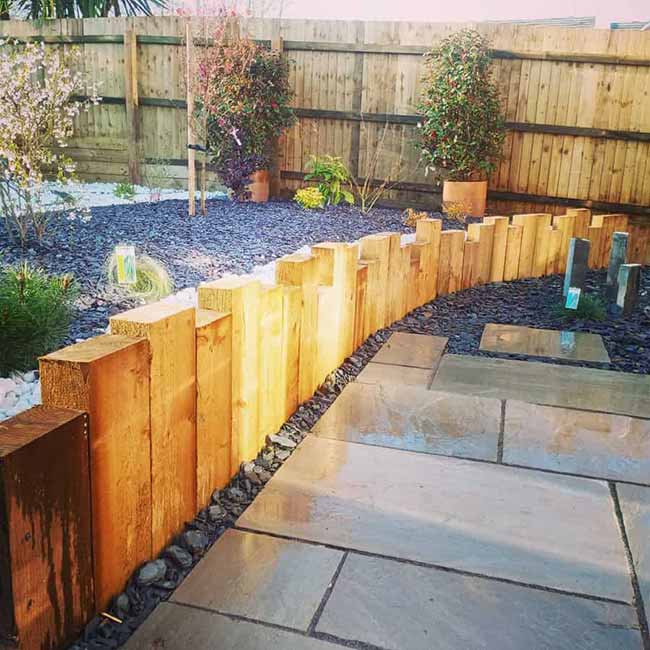
You don’t always need concrete to create a sleeper wall. Wood beams can also be used, arranged in a square shape for easy stacking. Metal straps are placed on the backside to secure the beams both horizontally and vertically.
If you like the look of wood but need the strength of concrete, consider purchasing concrete sleepers with a wood grain texture. You can then stain or paint the concrete to achieve the same visual effect as wood, giving you the best of both worlds.
Use Treated Pine Sleepers, Which Can Withstand Rot, Wood-Boring Insects, And Other Issues, For A Durable Retaining Wall.
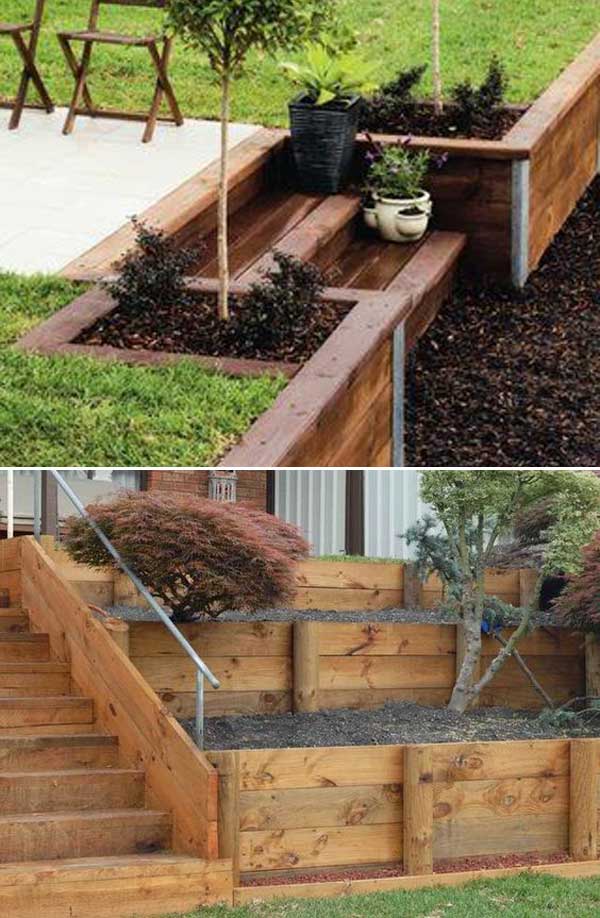
Let’s talk about wood, a fantastic choice for a front yard retaining wall.
What’s great is that you don’t come across wooden retaining walls all that often, which adds a unique touch to your landscape.
Pick a color that matches your home, and you’re sure to boost your curb appeal and create an outdoor area that adds depth to your entire property. It’s a winning choice that’s sure to impress.
13. Choose Flagstone To Build Your Retaining Wall For A Modern Look, Despite Its Higher Cost.
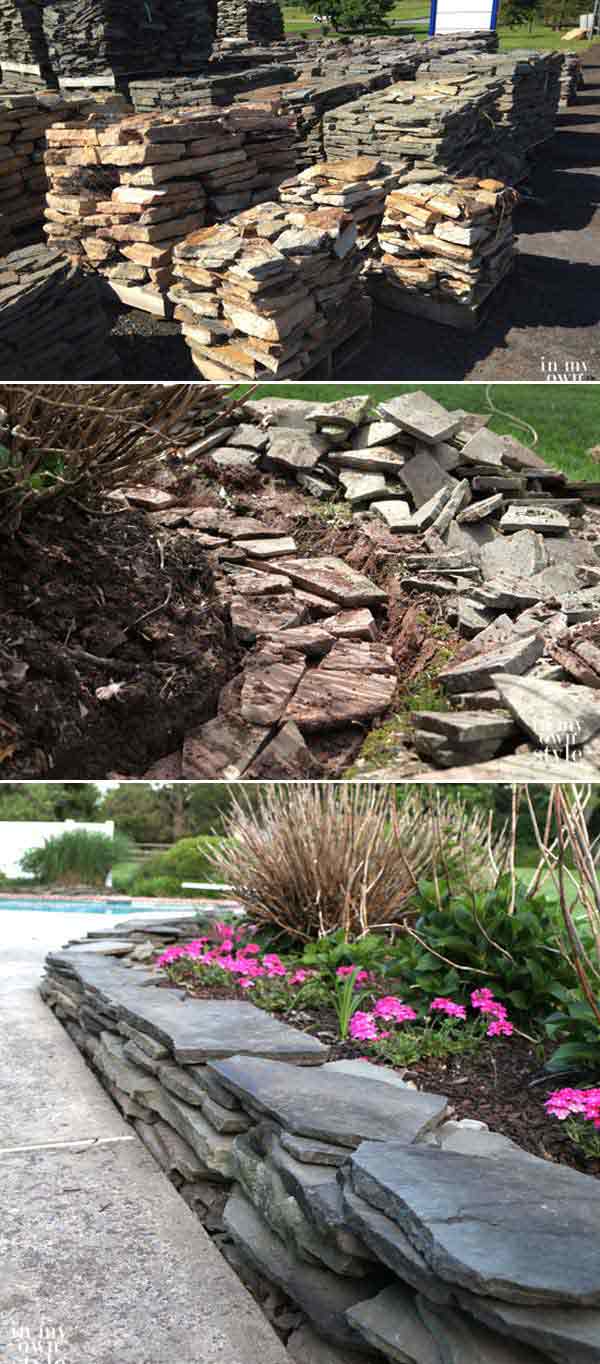
Get Tutorial here ====> inmyownstyle.com
14. Create A Polished Look Using Simple Cement Blocks Stacked On Top Of Each Other.
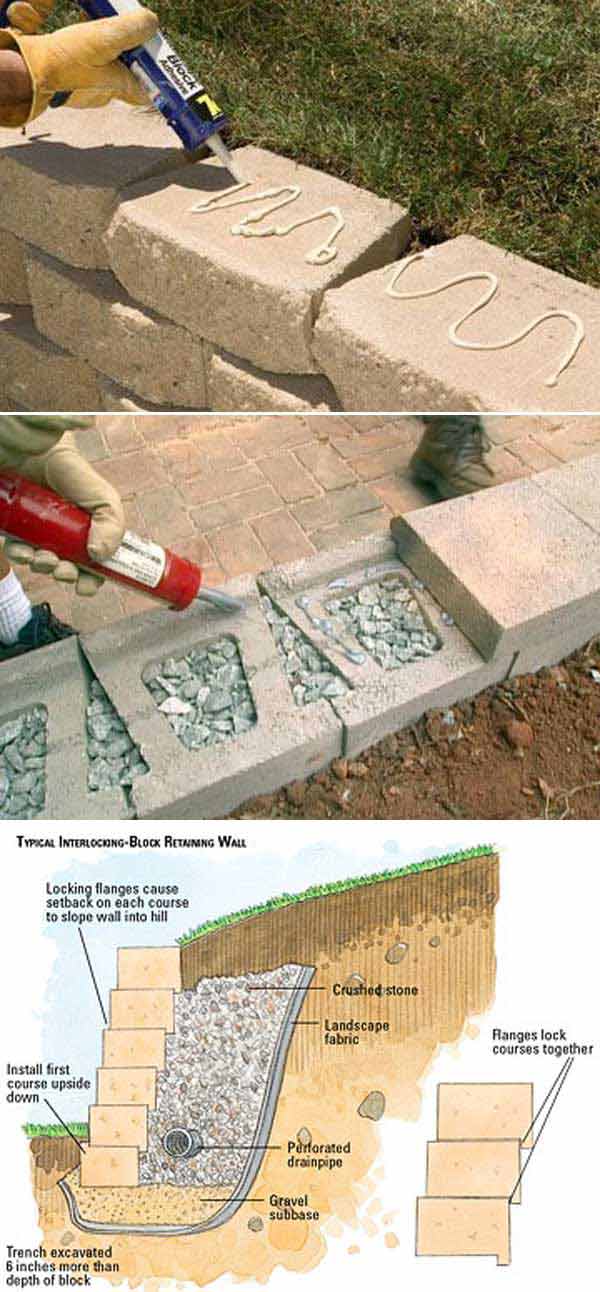
15. DIY Retaining Wall Using Pallets
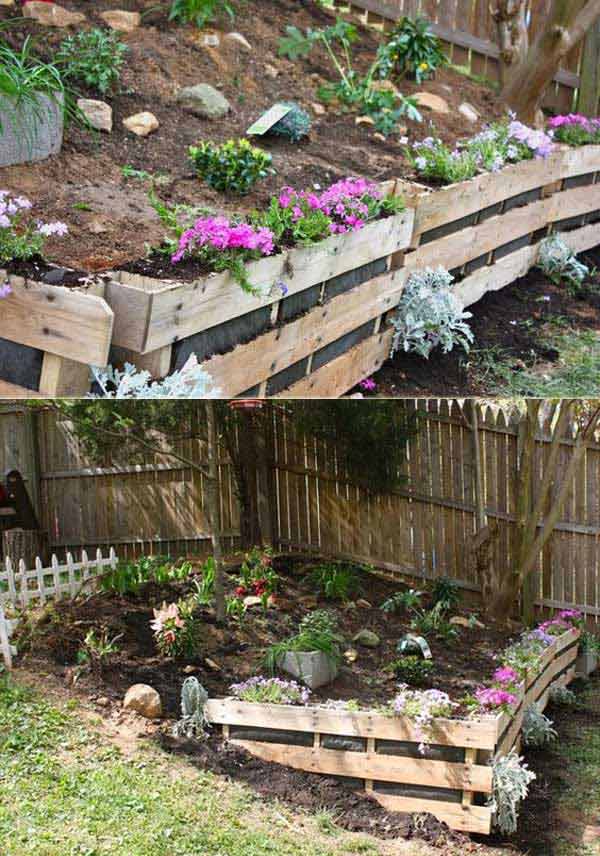
Pallets are versatile and inexpensive materials that can be repurposed for a variety of uses, including building a retaining wall. Often available for free through local recycling networks, pallets are a great way to create an eco-friendly, budget-conscious garden project.
The process of building a pallet retaining wall begins with preparing the area. First, a hole is dug and filled with stone and stone dust to ensure proper drainage. The pallets are then placed in the hole, and dirt is packed around them to hold them securely in place.
To make the pallets more functional and durable, they are often cut in half and lined with weed guard fabric to prevent weeds from growing through the gaps. The pallets are then stacked and fastened together at the back to form a solid wall. While pallets are not treated wood and may eventually rot, they are still an excellent option for those looking for a temporary yet effective retaining wall solution.
Source: buzzmills.typepad.com
11. Build a retaining wall by stacking unopened bags of Quikrete like bricks.
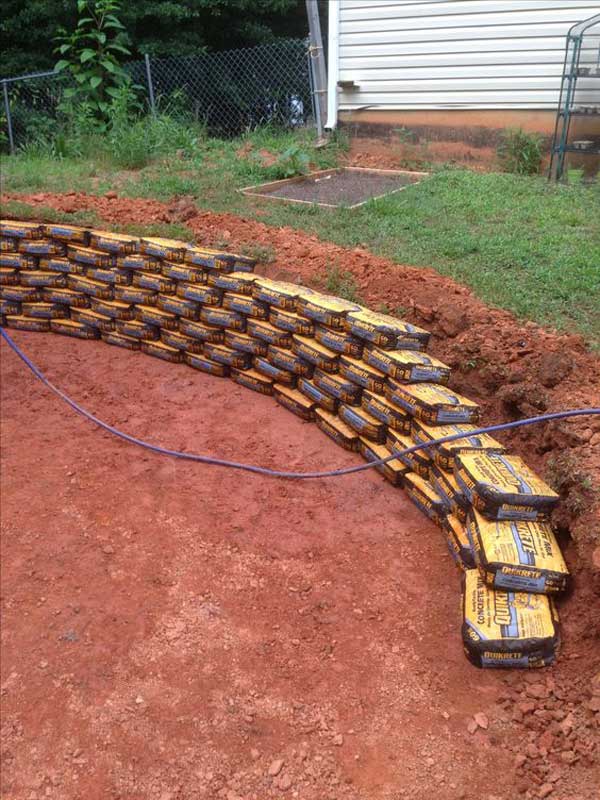
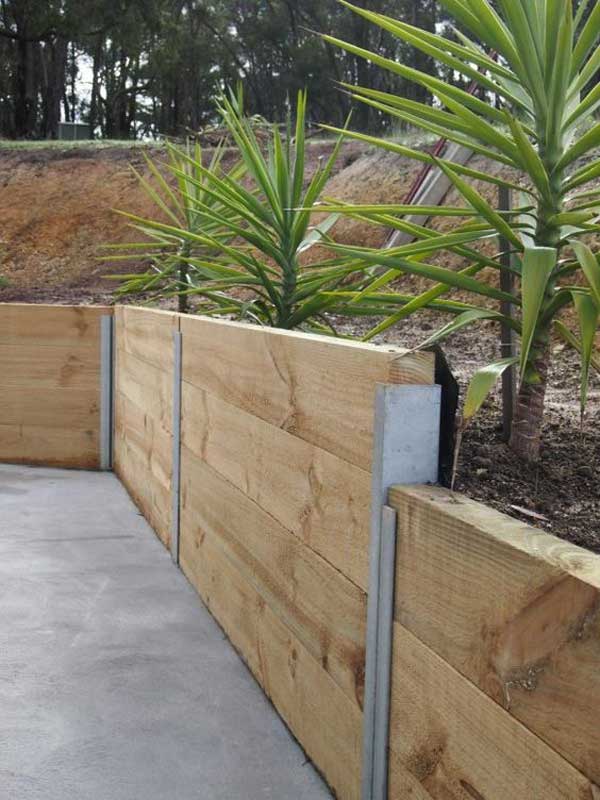
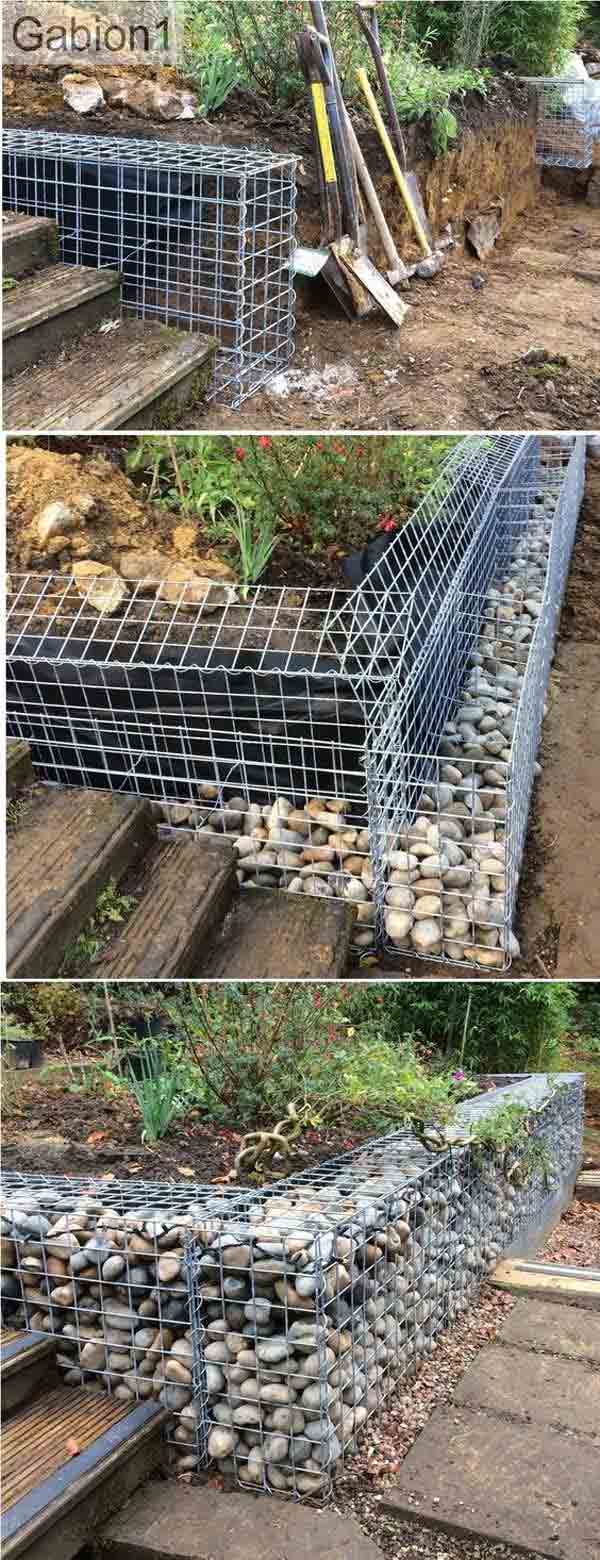
Source: gabion1.co.uk
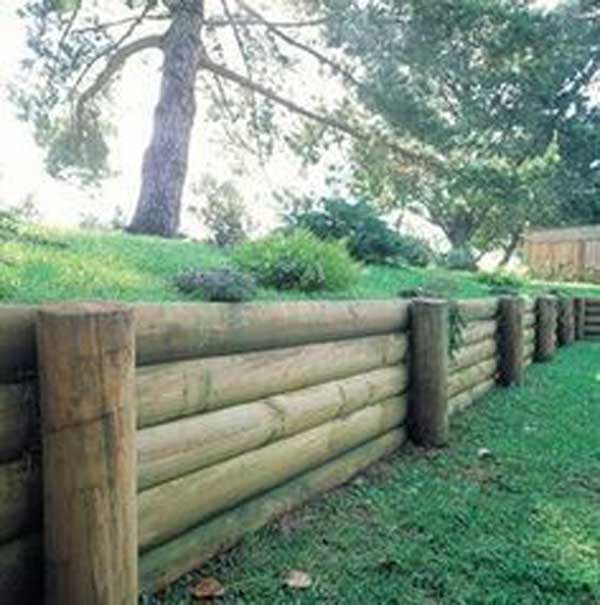
How to Make Retaining Wall On a Slope
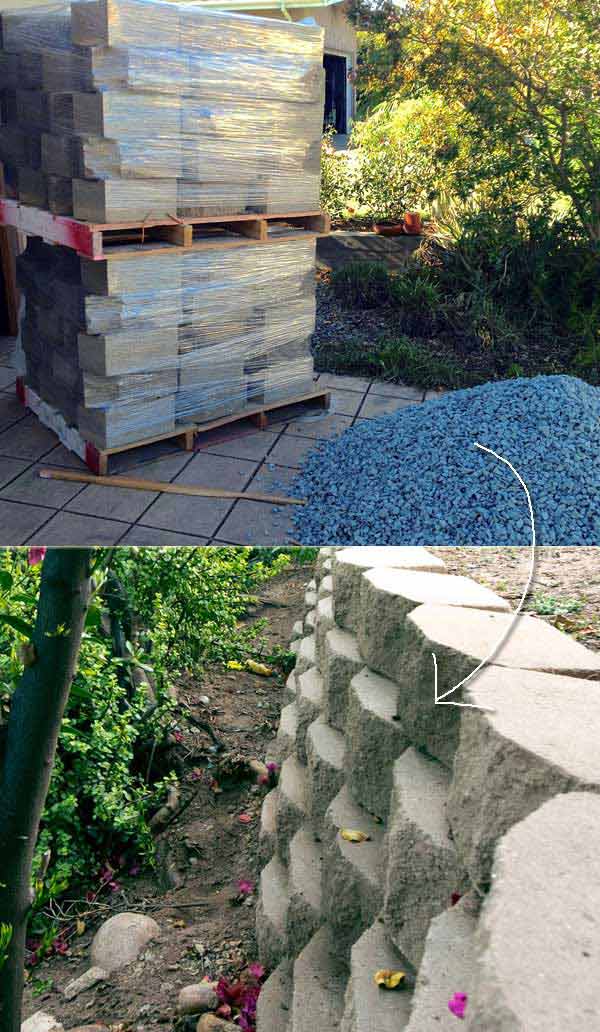
Tutorial: simplepracticalbeautiful.com
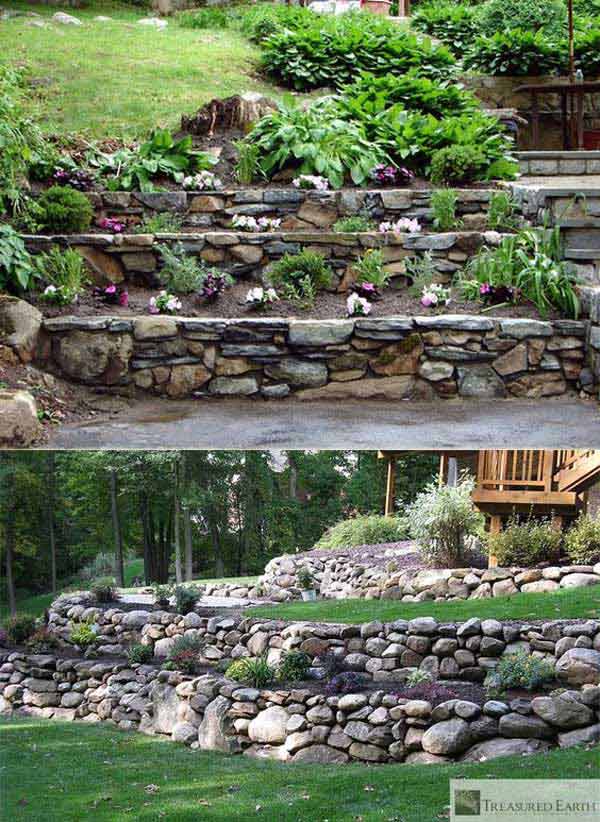
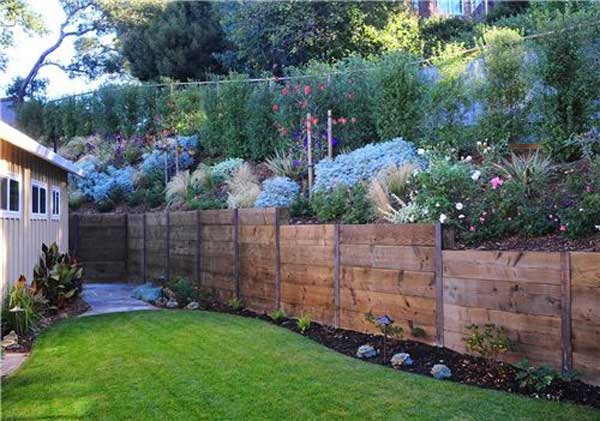
Source: landscapingnetwork.com
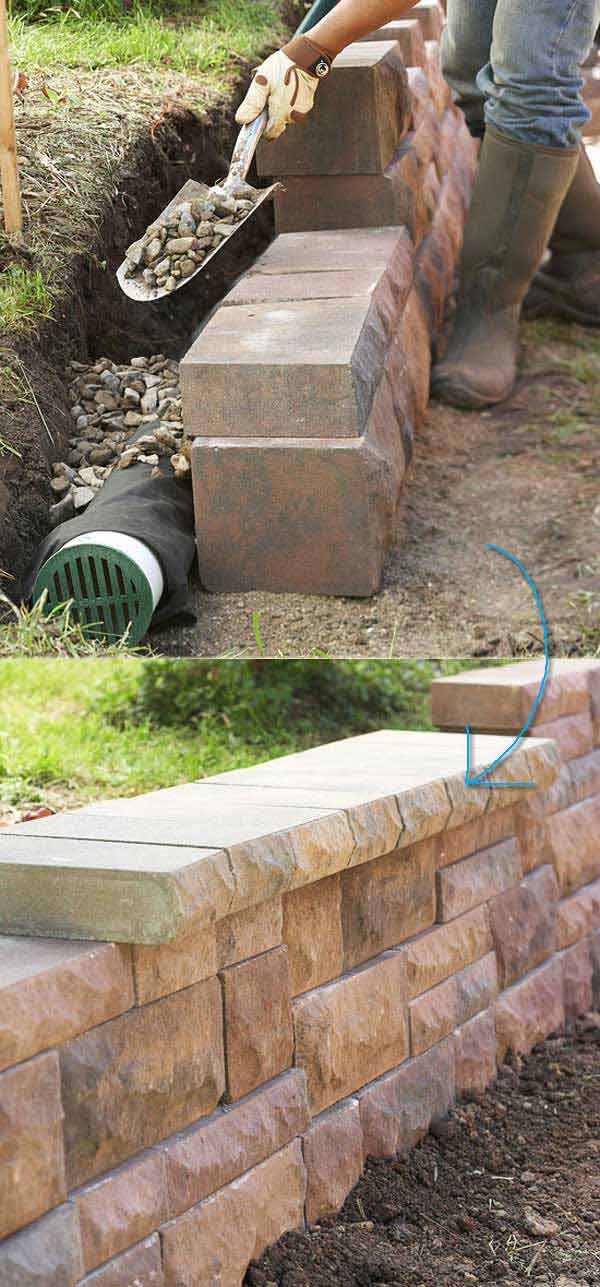
Get Tutorial here ====> bhg.com
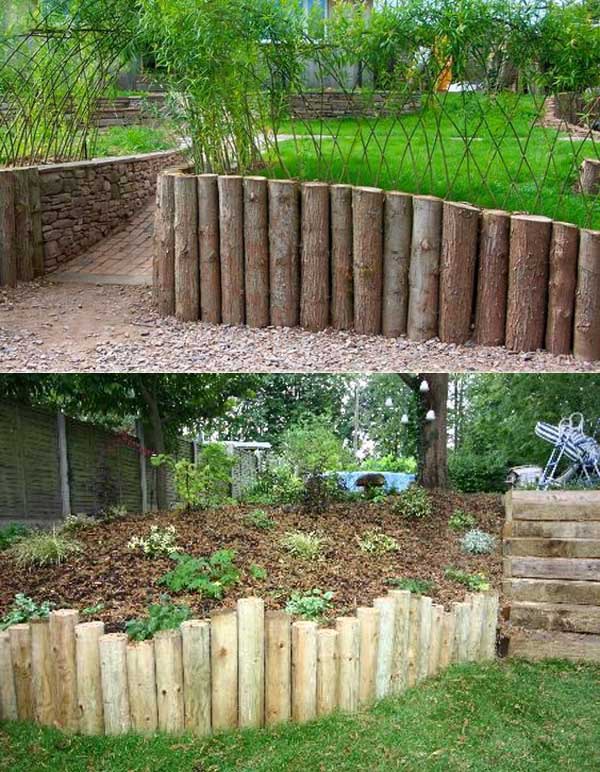
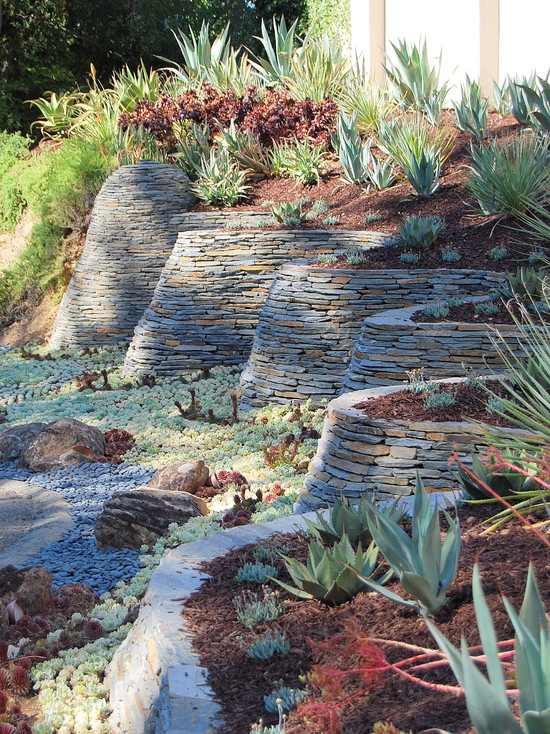
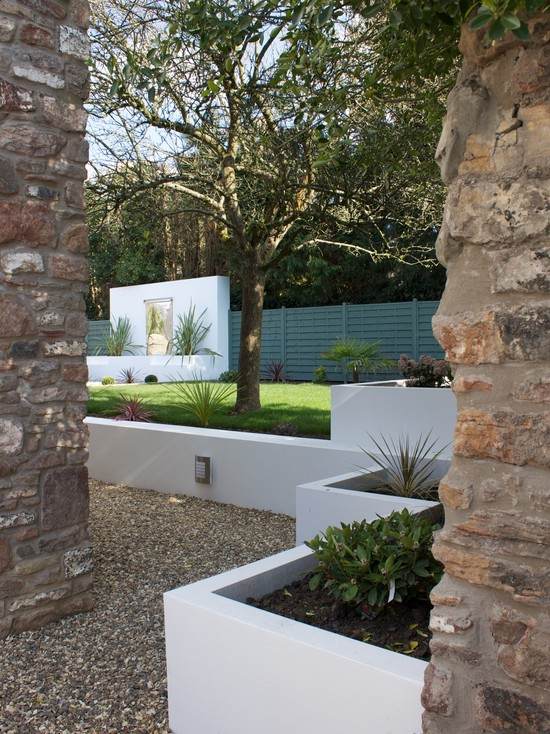
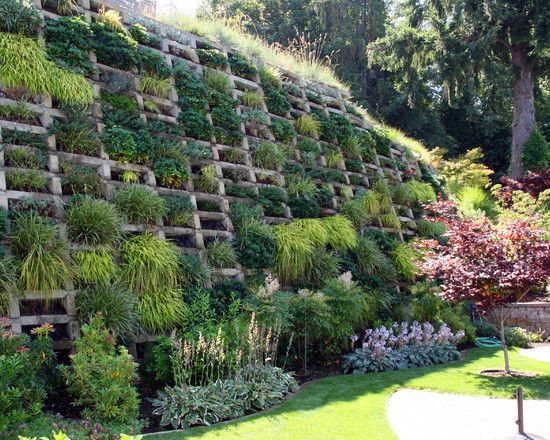
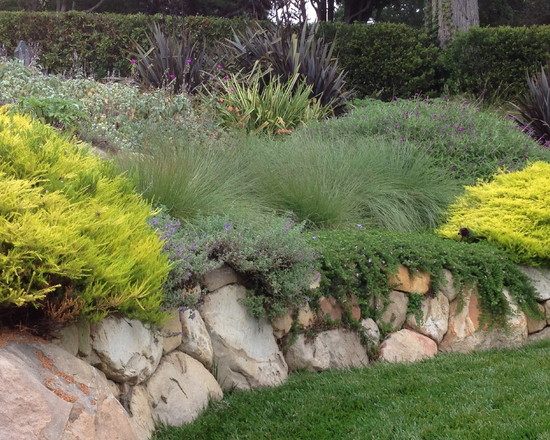
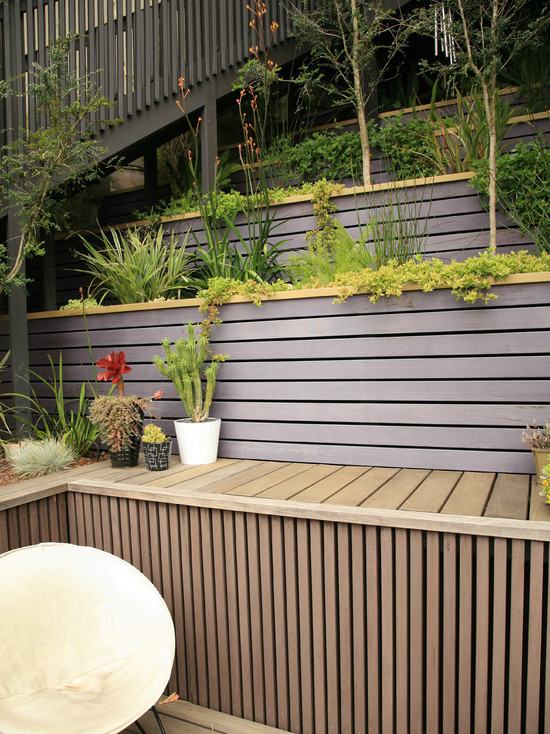
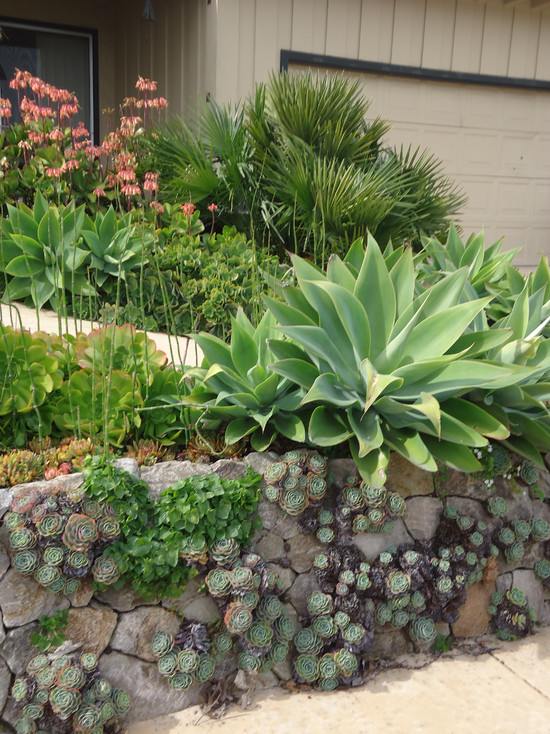
General Steps: How to Build a Retaining Wall
Building a DIY retaining wall can be a fun and rewarding project, but it’s important to follow each step carefully to ensure that the wall is safe and sturdy. Here are the detailed steps you’ll need to follow:
Step 1: Plan and Prepare
- Choose the location for your retaining wall and measure the length and height you want to achieve.
- Determine what materials you’ll need for your project. For example, you might choose to use concrete blocks, bricks, or natural stone.
- Obtain any necessary permits or approvals from your local government or homeowners association.
- Gather your tools and materials, which may include a shovel, wheelbarrow, level, rubber mallet, hammer, concrete mix, drainage pipes, and backfill material (such as gravel or soil).
Step 2: Excavation
- Use a shovel to dig a trench that is at least 1/3 of the height of your wall. For example, if you want a 3-foot-tall wall, your trench should be 1 foot deep.
- Make sure the trench is level and compact the soil at the bottom of the trench to create a stable foundation.
Step 3: Install Drainage
- Place a layer of gravel or crushed stone at the bottom of the trench.
- Lay perforated drainage pipes on top of the gravel, with the holes facing down.
- Cover the pipes with another layer of gravel or crushed stone.
Step 4: Lay the First Course
- Place your first row of blocks or stones in the trench, making sure they are level and snugly fit together.
- Use a rubber mallet to tap the blocks or stones into place as needed.
Step 5: Build the Wall
- Continue building your wall by laying additional courses of blocks or stones on top of the first course.
- Stagger the joints between each row for added strength and stability.
- Use a level to ensure that each row is straight and even.
Step 6: Add Reinforcement (Optional)
- If you’re building a taller wall or one that will be holding back a lot of weight, you may want to add reinforcement.
- Insert metal rods or rebar into the wall at regular intervals, and secure them with concrete.
Step 7: Backfill and Finish
- Once your wall is complete, backfill the area behind it with gravel or soil.
- Compact the backfill material as you go to prevent settling.
- Add any finishing touches you like, such as capstones or decorative stones.
The cost of your DIY retaining wall will depend on the materials you choose and the size of your project. As a rough estimate, you can expect to spend around $10 to $25 per square foot. For example, a 50-foot-long, 4-foot-high wall made of concrete blocks might cost between $2,000 and $4,000.
With these detailed steps and the right materials, you can create a beautiful and functional retaining wall that will last for years to come!
